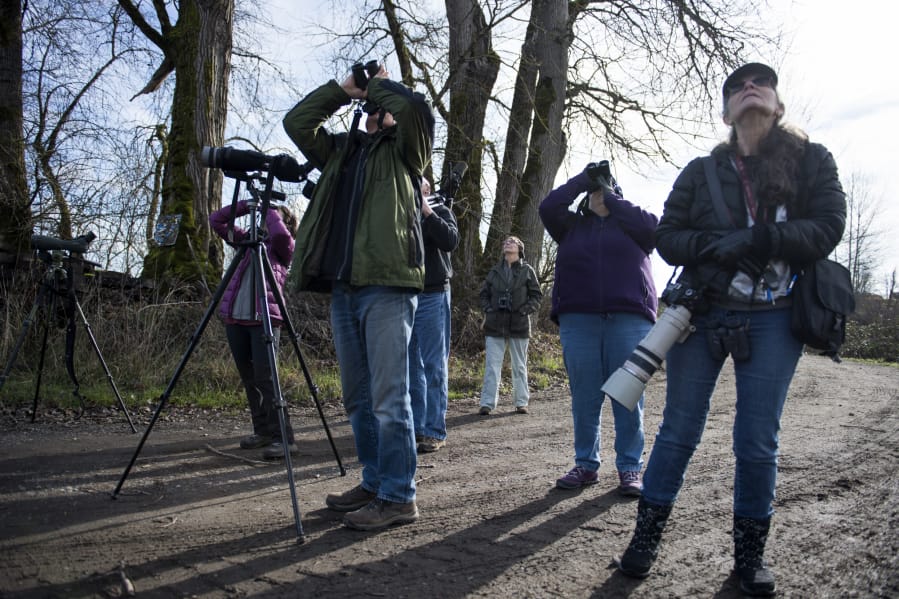Here’s some expert birding behavior, demonstrated by Bjorkman: Trying to get a rise out of certain small, dark, hard-to-identify birds by going “Psssh, psssh, psssh.” That’s a distress call that attracts gangs of allies to go harass an aggressive raptor, he said. When you mimic that sound to try to trick birds into flying toward you, Bjorkman said, what you’re doing is “pishing in the wind.”
Yes, he added, cracking well-worn birding jokes for newbies is also expert behavior. And by the way, those tough-to-identify little birds are generically called LBJs, or little brown jobs.
Grants and gatherings
Just as Setterberg approaches life through a birding lens, the National Audubon Society is an environmental conservation organization that approaches its whole mission through the health and well being of bird populations. There are hundreds of local chapters. “The common thread is love of nature and concern about nature,” Setterberg said.
But unlike most “podunk” Audubon chapters, Bjorkman said, the Vancouver one has some muscle. It was left property a few years ago, sold it and wound up with a tidy chunk of change that got parked at the Community Foundation for Southwest Washington. In the past few years, the Vancouver Audubons have granted a total of $54,000 to like-minded community groups, like the Chinook Trail Association and the Ridgefield National Wildlife Refuge.
The Vancouver Audubon Society holds a general membership meeting at 7 p.m. on the first Tuesday of every month (except July and August) at the Genealogical Society, 717 Grand Blvd., Vancouver.




